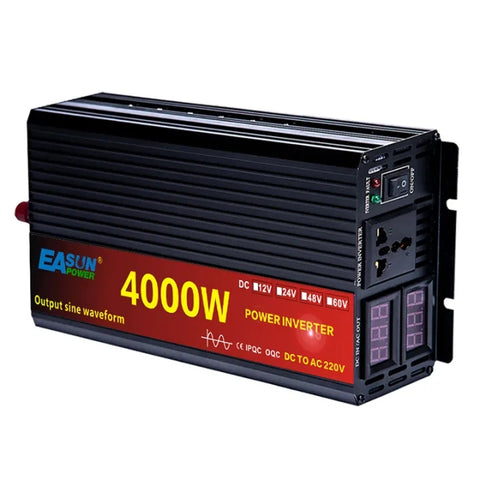Unlock the Secrets to Supercharging Your Car Inverter Performance!
In today's fast-paced world, where connectivity is crucial, car inverters have emerged as essential gadgets for powering various electronic devices on the go. Whether you're on a long road trip or simply commuting to work, having the ability to charge a laptop, power a cooler, or run other electronic devices can significantly enhance your travel experience. As more people rely on these devices, the need to maximize the performance of car inverters has never been greater. Understanding how to maximize the use of your car inverter not only ensures reliability but also contributes to the efficiency of your vehicle's power system. In this article, we'll delve into effective strategies and tips that will help you make the most out of your car inverter, ensuring you stay connected wherever the road takes you.

Understanding Car Inverters
A car inverter is a device that converts the direct current (DC) from your vehicle's battery into alternating current (AC), which is necessary for powering household appliances and electronic devices. These inverters come in various types, primarily modified sine wave and pure sine wave, each with distinct characteristics suited for different applications. Modified sine wave inverters are generally less expensive and sufficient for basic devices, while pure sine wave inverters provide a cleaner power output, making them ideal for sensitive electronics such as laptops and medical devices. Understanding the specifications and applications of these inverters is crucial to ensuring they meet your needs, whether you're charging your smartphone or powering a larger device like a television.
Choosing the Right Inverter for Your Needs
When selecting an inverter, several key factors come into play. First and foremost, consider the power output. It's crucial to determine the total wattage of the devices you intend to use; this will guide you in selecting an inverter with sufficient capacity. Additionally, understanding the differences between modified sine wave and pure sine wave inverters is essential, as this affects compatibility with various devices. For instance, sensitive equipment like computers will perform better with a pure sine wave inverter. Furthermore, consider the inverter's size and weight, especially if you have limited space in your vehicle or plan to transport it frequently. Taking the time to assess these factors will ensure you choose an inverter that aligns perfectly with your lifestyle and power needs.
Optimizing Inverter Placement in Your Vehicle
The placement of your car inverter can significantly impact its performance and efficiency. Ideally, the inverter should be installed in a well-ventilated area to prevent overheating, which can lead to performance issues or even damage. Avoid placing it under seats or in confined spaces where airflow is restricted. Additionally, consider ease of access; you’ll want to reach the inverter quickly for adjustments or troubleshooting. An excellent location is often near the vehicle's power source, such as the battery, to minimize voltage drop and ensure optimal performance. Proper installation helps in maintaining efficiency and prolonging the life of your inverter.
Effective Usage Tips for Maximum Efficiency
To ensure you're using your inverter efficiently, there are several practical tips to keep in mind. First, avoid overloading the inverter by exceeding its wattage limit; this can cause it to shut down or, worse, become damaged. Be mindful of the devices you connect, ensuring their combined wattage does not exceed the inverter's capacity. Additionally, managing battery power is crucial. It's advisable to monitor the vehicle's battery level and avoid using the inverter when the battery is low. Lastly, ensure all connections are secure and free from corrosion to maintain optimal power transfer. These practices will help you maximize the effectiveness of your car inverter.
Maintenance and Care for Longevity
Regular maintenance of your car inverter is essential for its longevity and performance. Start by cleaning the inverter regularly to prevent dust and debris buildup, which can affect its operation. Inspect the connections periodically to ensure they are tight and free from corrosion, as loose or corroded connections can lead to power loss and inefficiency. Additionally, monitor the inverter's performance; if you notice any unusual behavior, such as overheating or failure to power devices, it may be time for a professional check-up. By taking these steps, you can extend the life of your inverter and ensure reliable performance on the road.
Enhancing Your Car Inverter Experience
Maximizing the performance of your car inverter is not just about convenience; it's about enhancing your overall driving experience. From understanding the types of inverters available to making informed choices about placement and usage, each aspect plays a vital role in ensuring efficiency and reliability. By adopting the tips and strategies discussed in this article, you can significantly improve the functionality of your car inverter, ensuring that you stay powered up and connected no matter where your travels take you. Embrace these practices, and enjoy a seamless adventure on the open road!


